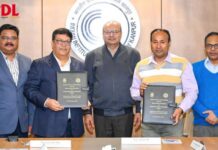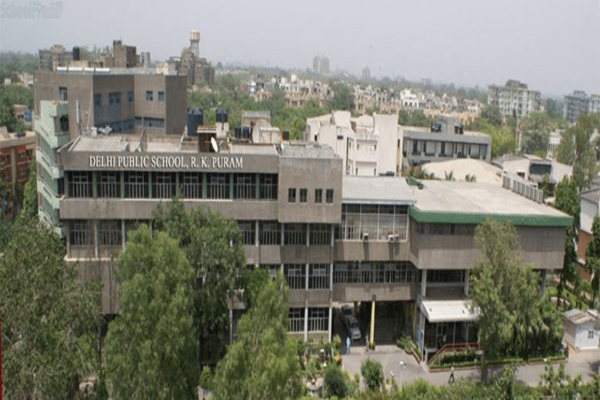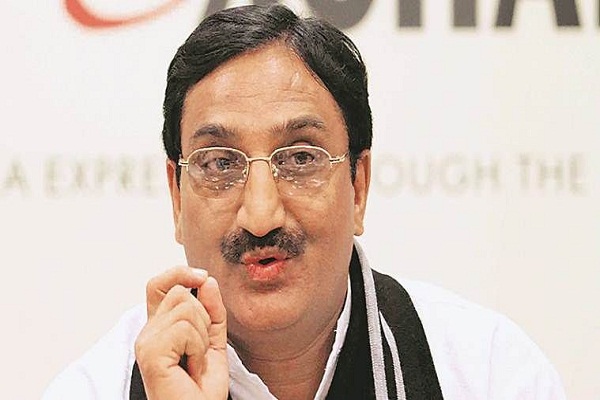
As the use of design has progressed from physical products to more technology enabled services including experiences and systems, there has also been a larger need for multi- disciplinary collaboration and open innovation to develop solutions which can maximize the human benefit, shares David Kusuma, President, World Design Organization in an exclusive interview with Abhineet Kumar of Elets News Network (ENN). Edited excerpts:
1. What do you think are the most important design trends that are shaping the world today? How do you see these trends evolving in the years ahead?
There are a number of important trends which are impacting the design profession. Design has become a popular global profession to the point where more universities are offering higher education studies in design. Industry representatives and corporations have learned that good design can increase sales because it focuses on what is important to the user and provides solutions which are simple, elegant, cost effective, and aesthetically pleasing. Because of this, business schools and other disciplines have also incorporated design thinking and HCD – human centered design methodology into their teaching curricula.
In recent years there has been a greater emphasis on sustainability and planet-friendly design solutions. The circular economy with an objective of keeping materials in continuous use has demanded that the profession balance the desire for DFMA (design for manufacturing and assembly) with the need for DFD (design for disassembly). Only by designing products in a manner which allows for materials to be separated at their end of life, can the materials be responsibly recycled and reused.
As the use of design has progressed from physical products to more technology enabled services including experiences and systems, there has also been a larger need for multi- disciplinary collaboration and open innovation to develop solutions which can maximize the human benefit. Design has a responsibility to ensure that technologies selected for use in our daily lives are developed and implemented in a way that maximizes their positive impact on society.
Moving into the future, we will see more design-led solutions incorporated towards more complex and unusual challenges, including design for social improvement. This means using and showing the power of design as a fundamental tool to make communities and human settlements more inclusive, more safe, more resilient, and of course, more sustainable.
2. As President of the World Design Organization, what do you think are the key challenges facing the design industry today, and how is your organization working to address them?
If our overarching objective is to “design for a better world,” today as in the past, the design industry lacks recognition and understanding from governmental institutions and policy makers. Most of the authorities we reach out to, do not understand what Design is, why it is good policy to invest in design, and how design can contribute to more sustainable solutions, social progress, and higher quality of life. This is the reason why the World Design Organization is highly focused today on strengthening our interactions with major world bodies and local governments in driving for better understanding of the design profession and the launching of major projects around the world to show that Design can provide a major impact to communities and urban areas:
• The World Design Index is a project to determine the true social impact through investment in Design. Everyone is asking for the numbers; when we talk with city and regional governments about investing in design, they all want to understand the payback and the return on investment in terms of social benefits and in terms of dollars. The WDO has set out to identify the metrics and international indicators needed to define the dimension of design capacity and capability, or the “design power” of a city, region, or country, and clarifying how such capability can directly affect the outcome and other indirect impacts.
• The World Design Capital (WDC) designation awarded every two years by WDO to a new design-forward city, is the perfect case study to test the data model for the world design index. City planning and design policies require analysis of huge amounts of data to make decisions and deliver proper visualization about design impact on land use, transportation, population growth, revitalization, and so on. Citizens have higher expectations on cities to provide better services, experiences, and transparency on plans for improvement. WDO has developed prototype visualization maps of past World Design Capital cities, highlighting all of the design installations from their activities, and tying those investments into quality of life as described in the UN SDGs.
• The World Design Policy Framework is being developed by WDO to promote design as a catalyst for growth and innovation. Design policy represents an increasingly critical tool in shaping the wellbeing of a city and its citizens. Through the integration of different branches of design expertise, policy has the power to create more meaningful experiences across the public sphere. While many countries recognize the power of design to strengthen economic and social development, very few have actually implemented design-led policies as part of their national agenda. And as the world’s cities continue to grapple with complex challenges, such as rapid urbanization and climate change, WDO decided to dedicate more focus on implementation. All of us have the same ambition and objectives to use Design to improve the human condition. However, design policy has limited value unless we can work together with governments at every level to understand design and to embrace it, because only when global organizations are able to understand the value of design, will they be able to leverage its power. The WDO believes the subject of Design Policy is one of the most important subjects for the future of our profession.
This is all work in progress and there’s still a lot of information to process. The WDO plans to publish our first work on these projects at the next World Design Assembly in Tokyo in October 2023.
3. How do you believe design can contribute to solving some of the world’s most pressing problems, such as climate change or social inequality?
Design can play a critical role in shaping and influencing how we find new solutions to some of the world’s most complex challenges, as defined nicely through the United Nations Sustainable Development Goals (UN SDGs). WDO’s member organizations have discussed many ways on how design can be highly relevant to solving global issues:
• Through the use of human-centered design, the needs and preferences of users are placed at the forefront of design decisions, ensuring that solutions are implemented in ways that are always beneficial to people.
• By focusing on usability and accessibility, designers can ensure that new innovations are usable and accessible to a wide range of users, including those with disabilities or those with limited technical knowledge.
• Utilizing interaction design can guide how users interact and accept new solutions through the design of interfaces, such as surfaces and other elements that improve and enhance the user experience.
• Incorporating effective visual and information design can simplify to make complex ideas more understandable and approachable.
• By building interdisciplinary collaboration and engaging with multi-disciplinary experts from other fields, design leaders can create real-world solutions which address technical and societal implications of new ideas and concepts.
• Through systems design that integrate different technologies and services, designers can help to create more seamless, efficient, and effective experiences and outcomes.
• With co-creation and partnering with users in the design process, unique solutions can be designed that meet the needs and preferences of the people who will benefit from them.
• Highlighting service design can create important solutions for higher quality of life which are beyond physical products.
• A focus on design for scalability results in design solutions which can grow and adapt as both technology and human needs change over time, allowing for long-term investment in technology and design solutions, and ensuring they remain relevant and effective.
Many of the world’s most challenging problems, including climate change and social inequality, are created due to human behavioral issues. By considering these design factors, the design profession can play a critical role in driving human settlements towards more positive behavior and outcomes.
4. How do you see the role of technology evolving in design, and what opportunities and challenges does this pose for designers?
In today’s world it is rather impossible to develop design solutions without also considering the incorporation of new technologies which can be used to bring greater human benefits.
Technology is all around us and the speed of communication continues to become faster and faster everyday. Design can play a critical role in shaping and influencing how new technologies are developed, implemented, and adopted.
The recent onset of AI is a good example of a disruptor technology in many professional disciplines, including design. It is said that AI has the ability to create multiple concepts in a very short amount of time, potentially replacing the designer or at the very least enhancing the number of concepts which designers can use in their work. It does this by looking through millions of designs which had been created earlier by human designers, and re-assembling components into new combinations of ideas, concepts, and opportunities.
This new capability has thrown the design profession into areas we have never been, and here is where we must strongly employ design ethics and social responsibility. While technology can provide amazing modern benefits, the temptation for misuse becomes even greater.
Designers must anticipate the potential social and ethical implications of new technologies such as AI, and continue to design solutions which promote fairness, maintain human centric considerations, maximize social and environmental sustainability, and align with principles such as privacy, security, and autonomy.
5. Can you share any examples of design projects or initiatives that you are particularly proud of, and that have had a significant impact on the communities they serve?
It is not clear if this question is asking about pride in personal work or pride in the work of WDO to impact communities.
During the time I was head of product at Tupperware, my team worked on sustainable product categories for food storage which I am very proud of. Both from the application of bio and renewable materials, and secondly from the incorporation of post-harvest science which allows consumers to keep their foods (vegetables and fruits) fresher for several weeks longer. This product line was calculated to have a negative carbon footprint because it kept food out of the waste stream, reducing greenhouse gases, while also saving the consumer money. It became the top selling product line around the world for at least three years running.
For design projects in concert with WDO members there are several recent initiatives the WDO can be proud of. We completed the first phase of a project with the United Nations Women (UN Women) on using Design to find solutions to gender based violence, particularly violence against women and girls. The UN Women had never worked with designers in the past and were so delighted and appreciative with the outcomes that they requested WDO to work with them on a phase 2 program to build the best concepts (mostly architectural installations designed to change mindsets and drive positive behaviors) and place them into the public to bring true benefit to victims and communities.
The WDO global community has also engaged with the International Space Station (ISS) on a project titled “Design in Space for Life on Earth,” looking to make space-based research and circular learnings more beneficial to human settlements on Earth. There was also a joint project with the World Packaging Organisation (WPO) to develop a roadmap for eliminating packaging waste while maximizing safety for sectors such as the pharmaceutical industry. Finally, every two years the WDO designates a new city as World Design Capital (WDC) with dedicated urban programs for the effective use of design to drive economic, social, cultural, and environmental development and improve the overall quality of life in those cities.
6. Finally, what do you see as the future of the World Design Organization, and what are your priorities for the organization in the years ahead?
The World Design Organization is the global body and international voice for Industrial Design. It has been promoting “Design for a Better World,” using the UN SDG’s – the United Nations Sustainable Development Goals as a guideline – to partner and work towards solving some of humanity’s biggest challenges. The WDO is proud to be partnering with WDO members from around the world to drive our mission forward; to advocate, promote, and share knowledge of design driven innovation that has the power to create a better world.
However we must realize that the UN SDGs are a 2030 initiative which expires in 7 years. They were not created with input from the design community and most of the current objectives are not achievable within this timeframe. Therefore it is imperative the next set of SDGs get created with design-led initiatives which are practical and which can actually be achieved. Over the past two years WDO has been able to connect and work with other global organizations and world bodies such as UNIDO, UN Women, and the World Packaging Organization. We worked on projects to teach them about design and show how our profession can help to meet their objectives, and we wish to create the next set of SDGs in partnership with our United Nations and global partners.
We also wish to explore the future direction of design education, and establishing Design’s role in shaping future society through discernment. Meaning, having both the ability to determine what is the most important for human civilization, and then utilizing our design capability to achieve new solutions and objectives! We know that Designers will need to adapt into a more complex world of technological convergence, shifting design expertise into dynamic new specializations, and allowing the expansion into new possibilities and new opportunities to create solutions for both the physical and virtual worlds. Whether we are designing new spaces for public use, improving infrastructure and technology for better accessibility and mobility, or creating products and services to provide solutions for housing, food and healthcare, Design can provide the leadership to ensure new technologies and solutions are more useful and more beneficial for people. There is a renewed focus on returning to what matters most. Being “rich” in life does not necessarily mean having more money or more possessions. It’s more about living a simpler, healthier life and having meaningful connections with people, our communities and our planet.
























